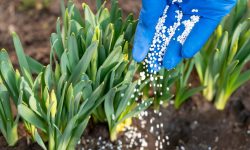Sunflowers are among the most iconic and cheerful flowers, renowned for their bright yellow petals and towering stature. Planting sunflower seeds can be a rewarding experience, especially when done correctly to promote fast growth and healthy development. Whether you want to cultivate sunflowers in a garden bed, containers, or even a field, understanding the right techniques and conditions for planting sunflower seeds is essential.
In this comprehensive guide, we will explore the best methods to plant sunflower seeds the right way for quick and vigorous growth, from soil preparation to watering and care.
Understanding Sunflowers and Their Growth Needs

Before planting sunflower seeds, it’s important to understand what these plants require to thrive. Sunflowers (Helianthus annuus) are annual plants that grow best in warm weather and need plenty of sunlight. They are known for their rapid growth rate, sometimes reaching several feet within weeks after germination. However, this fast growth is only possible if the seeds are sown under the right conditions.
Sunflowers are quite hardy but have specific needs in terms of soil quality, temperature, moisture, and sunlight exposure. Knowing these factors will help you create the optimal environment for your sunflower seeds to sprout quickly and grow vigorously.
Choosing the Right Sunflower Variety for Your Garden
Sunflowers come in many varieties, ranging from dwarf types suitable for containers to giant cultivars that can reach heights over 10 feet. Selecting the right sunflower variety is the first step to achieving fast growth.
If your goal is quick germination and growth, look for varieties bred for shorter maturity times. Some sunflower cultivars are designed to mature in as little as 60 days, making them ideal for gardeners seeking rapid results. On the other hand, giant sunflowers may take longer but reward you with impressive height and large blooms.
Additionally, consider your climate and space. For limited space or container gardening, dwarf or medium-sized varieties grow faster and are easier to manage. For open fields or large gardens, taller varieties may be preferred.
Preparing the Soil for Planting Sunflower Seeds
The soil plays a crucial role in sunflower seed germination and subsequent growth speed. Sunflowers prefer well-draining soil rich in organic matter. Heavy clay soils or waterlogged conditions can delay growth or cause seed rot.
To prepare your soil properly, start by loosening it to a depth of at least 12 inches. This allows the sunflower roots to penetrate deeply and access nutrients and moisture. Adding compost or well-rotted manure will improve soil fertility and texture, enhancing seedling vigor.
Sunflowers thrive in slightly acidic to neutral soil pH, typically between 6.0 and 7.5. If your soil is too acidic or alkaline, consider testing and amending it with lime or sulfur accordingly. Good soil preparation ensures your sunflower seeds have the nutrients and structure they need for fast, healthy growth.
The Best Time to Plant Sunflower Seeds
Timing is another key factor in planting sunflower seeds for fast growth. Sunflowers are warm-season plants sensitive to frost, so seeds should only be planted after the last frost date in your area. Planting too early in cold soil will slow germination and increase the risk of seed failure.
Ideal soil temperatures for sunflower seed germination range from 55°F to 70°F (13°C to 21°C). Warmer soil within this range promotes faster sprouting, often within 7 to 10 days. Waiting until the soil warms up enough ensures a quick start.
In most temperate regions, late spring to early summer is the perfect planting window. If you live in a warmer climate, sunflower seeds can be sown in early spring or even late summer for a fall bloom, as long as the frost risk is minimal.
How to Plant Sunflower Seeds Correctly
Planting sunflower seeds the right way involves proper seed placement and spacing to encourage strong growth without competition. The seeds should be sown about 1 to 2 inches deep in the soil, ensuring they are covered but not too deep to struggle emerging.
Spacing is critical since sunflowers develop large leaves and extensive root systems. Planting seeds too close together causes competition for sunlight, water, and nutrients, which slows growth. For faster growth and healthier plants, maintain spacing of 6 to 12 inches between seeds for smaller varieties and up to 24 inches for larger ones.
Planting in rows or blocks with adequate spacing between rows allows for good air circulation and easy maintenance. If planting multiple seeds per hole, it is advisable to thin seedlings after germination to keep only the strongest plant.
Watering and Moisture Requirements for Rapid Growth
Water is vital for sunflower seeds to germinate quickly and for seedlings to grow vigorously. After planting, the soil should be kept consistently moist but not soggy. Overwatering can lead to fungal problems or seed rot, while underwatering causes slow germination and stunted growth.
During the first two weeks, when seeds are sprouting and seedlings establishing, daily monitoring of soil moisture is important. Light watering to keep the soil damp promotes fast root development. Once the plants grow taller and develop strong roots, they become more drought-tolerant, but regular watering remains important, especially in hot, dry weather.
Mulching around young sunflowers helps retain soil moisture and reduces temperature fluctuations, aiding faster growth. However, avoid excessive mulch near the stem to prevent rot.
Sunlight Exposure and Temperature Impact on Growth Speed
Sunflowers are heliotropic plants, meaning they naturally turn their heads toward the sun throughout the day. Full sunlight exposure is essential for their rapid growth and vibrant blooms. Sunflower seeds sown in shaded or partially shaded areas will germinate slower and grow spindly or weak.
A minimum of six to eight hours of direct sunlight daily is recommended. More sunlight generally translates to faster growth, stronger stems, and bigger flowers.
Temperature also influences sunflower growth. Warm temperatures between 70°F and 78°F (21°C to 26°C) encourage optimal development. Extremely hot or cold conditions may stress the plants and reduce growth rates.
Fertilizing Sunflowers for Maximum Growth
While sunflowers can tolerate moderately poor soils, adding fertilizer can significantly speed up their growth and boost flower quality. Fertilizers rich in nitrogen encourage leafy growth, while phosphorus supports root development and flowering.
Before planting, mixing a balanced fertilizer or organic amendments into the soil provides a nutrient boost. Once seedlings appear, side-dressing with a nitrogen-rich fertilizer every few weeks helps maintain fast growth.
However, excessive nitrogen can lead to lush foliage but fewer flowers, so it’s important to balance fertilizer applications. Using compost teas or slow-release fertilizers are good options to provide steady nutrients without overwhelming the plants.
Protecting Sunflower Seedlings from Pests and Diseases
Young sunflower seedlings are vulnerable to pests such as birds, squirrels, and insects, which can slow growth or destroy plants. Protecting seeds and seedlings increases the chances of rapid, uninterrupted growth.
Using bird netting or row covers can prevent birds from digging up seeds or eating seedlings. Physical barriers also deter small mammals. Additionally, inspecting seedlings regularly helps detect insect pests like aphids or caterpillars early.
Diseases such as damping-off, caused by fungal pathogens in overly wet soils, can kill seedlings before they grow tall. Proper soil drainage and careful watering reduce this risk.
Transplanting Sunflower Seedlings: When and How
While sunflowers are often directly sown outdoors, some gardeners start seeds indoors to get an early jump on the growing season. If transplanting sunflower seedlings, timing and care are crucial to avoid stunting growth.
Seedlings should be transplanted when they have developed at least two sets of true leaves and the outdoor conditions are favorable. Hardening off seedlings by gradually exposing them to outdoor conditions over a week helps them adapt and grow quickly after transplanting.
When moving seedlings, handle roots gently and plant at the same depth as they grew in pots. Water immediately after transplanting and provide some temporary shade if the sun is intense.
Encouraging Strong Stem Development for Healthy Growth
A sturdy stem supports the sunflower’s fast growth and large flowers. To encourage strong stems, adequate sunlight, balanced watering, and avoiding overcrowding are important.
In windy areas, gentle staking or support may help young plants until they strengthen naturally. Avoid excessive nitrogen fertilizer, which can cause weak, floppy stems.
Regularly observing your sunflowers for signs of weakness or stress allows timely intervention and ensures plants grow quickly and robustly.
Harvesting Sunflowers and Preparing for Next Planting
Knowing when and how to harvest sunflowers is part of successful sunflower gardening. Fast-growing sunflowers usually bloom 60 to 90 days after planting, depending on the variety.
Harvest seeds when the flower heads begin to droop and the backs turn yellow or brown. Proper drying and storage ensure seeds remain viable for the next planting season or can be enjoyed as snacks.
After harvesting, removing old plants and adding compost to the soil replenishes nutrients for future crops.
Common Mistakes That Slow Sunflower Growth and How to Avoid Them
One of the most common mistakes that slow sunflower growth is planting seeds too early in cold soil. This delays germination and results in weak seedlings that struggle to develop properly. Waiting until the soil has warmed up sufficiently ensures rapid sprouting and stronger plants.
Another important factor is watering. Both overwatering and underwatering can hinder growth significantly. Maintaining balanced soil moisture is essential for healthy sunflower development and fast growth.
Planting seeds too close together is also a frequent error. When seedlings compete for sunlight, water, and nutrients, their growth becomes stunted and uneven. Proper spacing allows each plant to grow vigorously without unnecessary competition.
Neglecting soil preparation and fertilization often leads to nutrient deficiencies, which slow down the entire growth process. Providing fertile, well-amended soil ensures that sunflowers have all the nutrients they need to thrive quickly.
Finally, insufficient sunlight exposure or poor pest management can drastically reduce growth rates. Sunflowers need plenty of direct sunlight and protection from pests to maintain strong, fast development.
By avoiding these common mistakes, gardeners can enjoy quick, healthy sunflower growth and a more successful planting season.
FAQs About How to Plant Sunflower Seeds for Fast Growth
How long does it take for sunflower seeds to germinate?
Sunflower seeds typically germinate within 7 to 10 days when planted in warm soil with proper moisture.
What is the ideal soil temperature for planting sunflower seeds?
The ideal soil temperature for sunflower seed germination ranges from 55°F to 70°F (13°C to 21°C).
How deep should I plant sunflower seeds?
Plant sunflower seeds about 1 to 2 inches deep to ensure good soil contact and proper emergence.
How much sunlight do sunflowers need to grow fast?
Sunflowers require at least 6 to 8 hours of direct sunlight daily for optimal and fast growth.
Can I plant sunflower seeds too close together?
Yes, planting seeds too close causes competition for resources, leading to slower growth. Proper spacing is important.
How often should I water sunflower seeds after planting?
Keep the soil consistently moist but not waterlogged, especially during the first two weeks after planting.
Conclusion
Planting sunflower seeds the right way is the foundation for achieving fast growth and beautiful blooms. By selecting the appropriate variety, preparing fertile and well-drained soil, planting at the right time and depth, and providing optimal sunlight, moisture, and nutrients, gardeners can ensure their sunflowers sprout quickly and flourish.
Careful attention to watering, pest control, and plant support encourages vigorous growth and healthy plants. Whether you grow sunflowers for their stunning appearance, seed harvest, or wildlife attraction, following these guidelines will help you succeed in growing tall, fast, and radiant sunflowers.
Enjoy the process of planting and watching your sunflower seeds transform into magnificent flowers that brighten your garden and spirit throughout the season.






